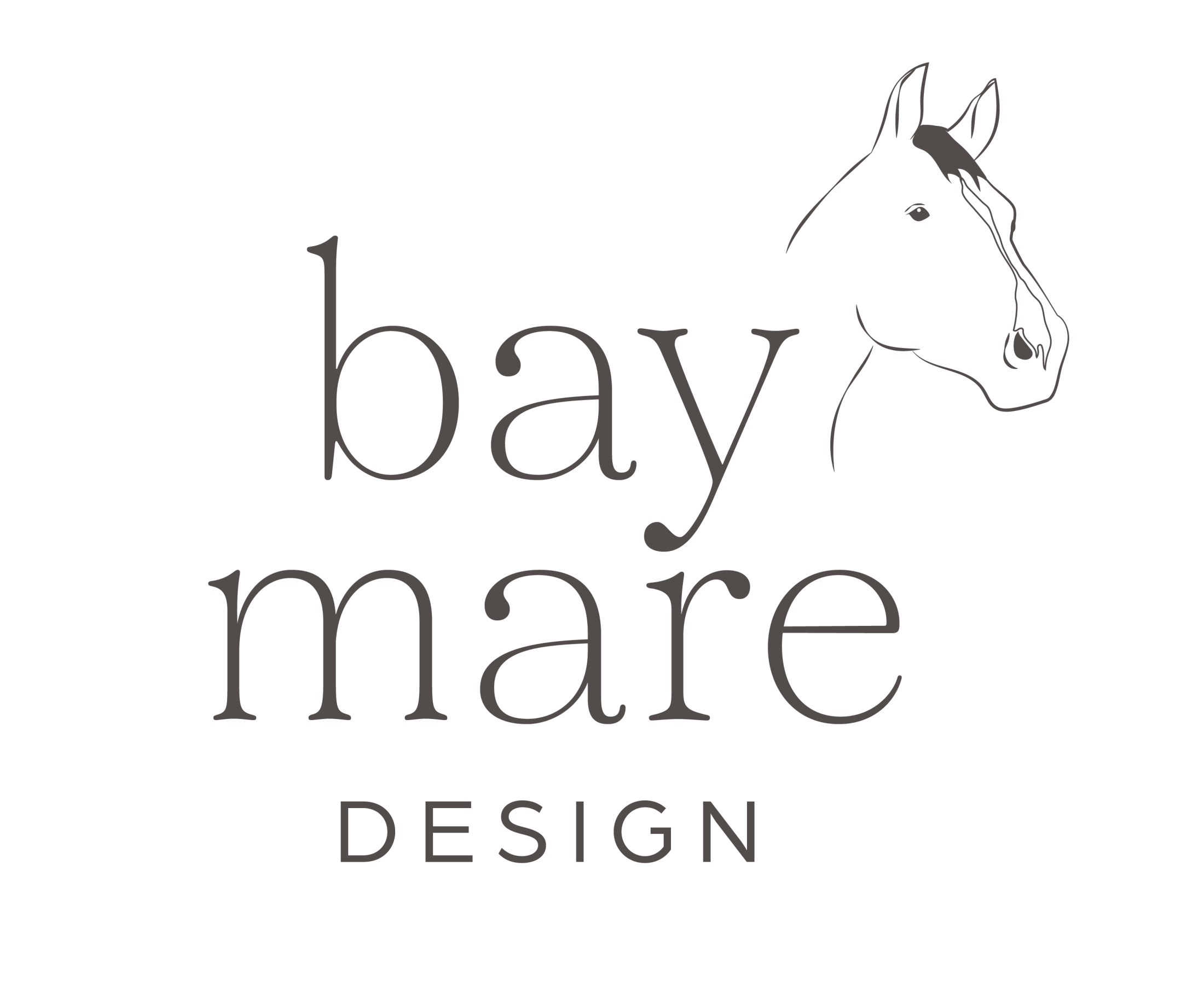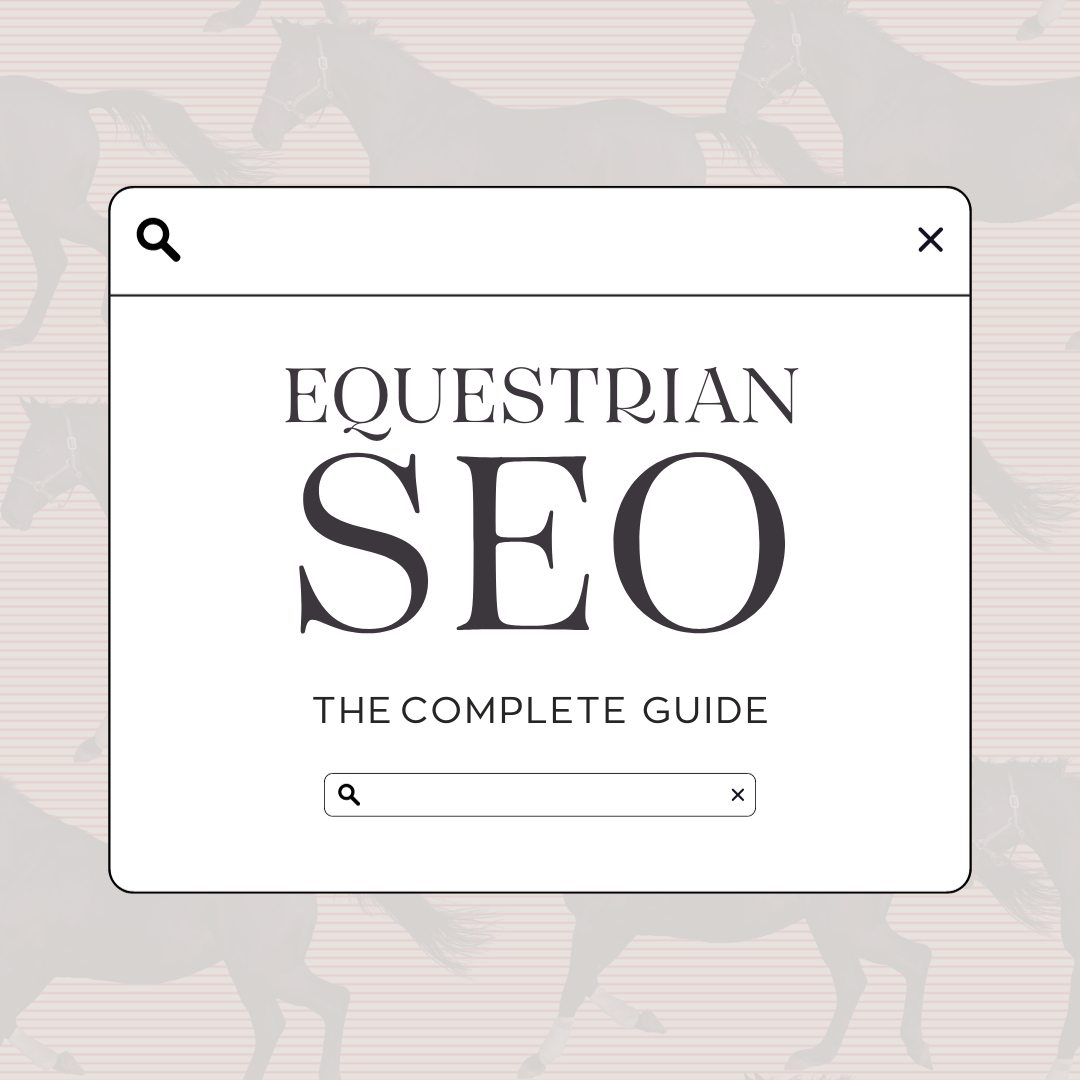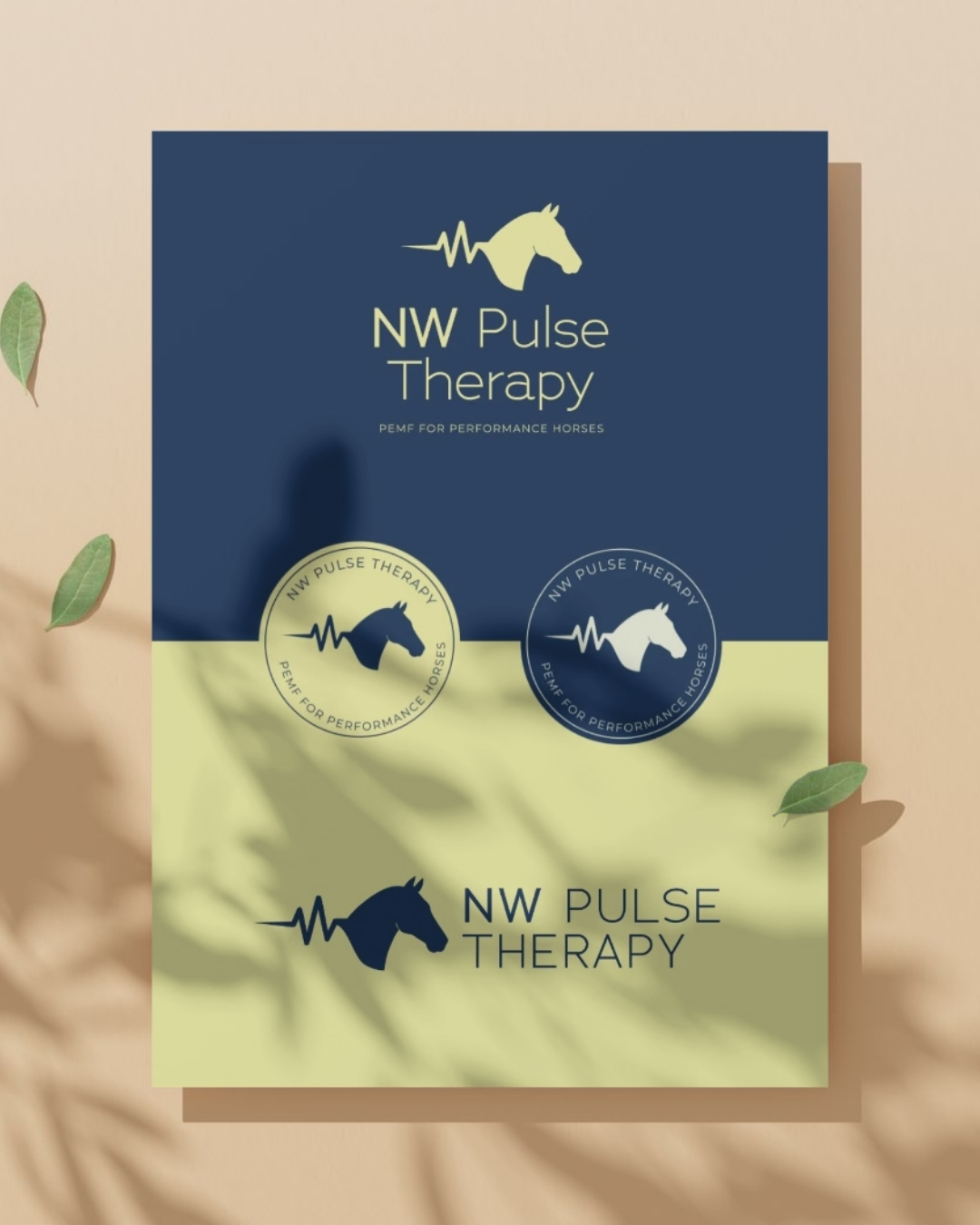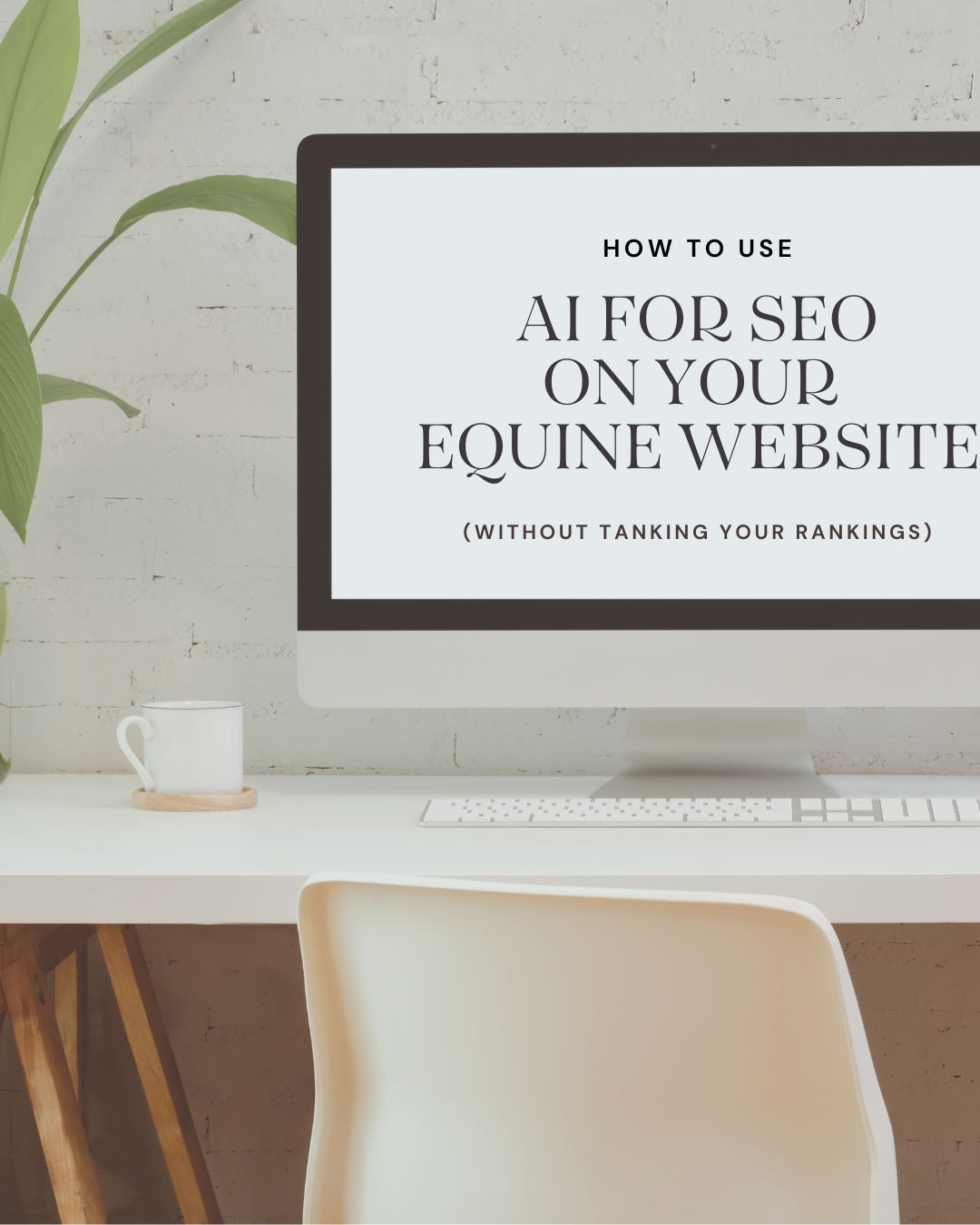Table of Contents
What is SEO and Why Should You Care?
Use SEO to Market Your Equine Business
Everyone wants their business to show up first when their dream client is frantically Googling “horse trainer near me” at midnight. That’s where SEO comes in.
SEO (Search Engine Optimization) is just a fancy way of saying “make your website show up when people search for your stuff.” Nothing more complicated than that!
Here’s the best part: most equine businesses don’t have a decent website, let alone a strategy for SEO. That means with just a little effort, you can get a marketing edge over your online competitors. While SEO isn’t an overnight miracle (sorry!), it’s absolutely worth the time for your horse business.
SEO Basics: No Computer Science Degree Required
When you optimize your website for search engines, you’re essentially waving your hand at Google saying, “Hey! Over here! I’ve got exactly what they’re looking for!” You do this by using the right words and organizing your website in a way that makes sense to both humans and search engines (which, despite their power, can be pretty clueless without our help).
Find Your Perfect Keywords
Keywords are the words and phrases your ideal clients type into Google when looking for services like yours. For example, if you’re a saddle fitter, your clients might search “custom saddle fitting for jumpers” or “saddle pain solutions for my horse.”
The trick is figuring out exactly what your people are typing. Here are some easy ways to do that:

1. Play Detective with Free Tools
You don’t need expensive software to get started! Ubersuggest is a free, user-friendly tool that can help you discover what people are searching for related to your business. Just type in something like “horse boarding” and it’ll show you related searches that real people are typing into Google.
2. Use Google's Autocomplete (Free and Easy!)
This one couldn’t be simpler. Start typing a phrase related to your business into Google and see what pops up in the dropdown. Those suggestions are actual searches people are making! For example, type “horse riding lessons for” and you might see “adults,” “beginners,” or “children” pop up.
3. Just Ask Your Clients (Revolutionary, I Know)
The direct approach works wonders! Post a quick question on your Instagram story asking “If you were looking for [your service], what would you type into Google?” Your followers are usually happy to help, and their answers might surprise you!
Pro Tip: Keep a running list of these keywords somewhere (a simple note on your phone works fine). They’ll come in handy when you’re creating content.
Create Content Your Horse People Actually Want to Read
Here’s where many equine business owners trip up – they do all the keyword research and then either:
- Never actually write anything
- Write super boring, keyword-stuffed content that no human would voluntarily read
Your content should be genuinely helpful or entertaining FIRST, and optimized for search engines SECOND. After all, what’s the point of getting people to your site if they leave immediately because your content is about as exciting as watching paint dry on a fence post?
Find Topics That Make People Click
Before you start typing away, take a minute to figure out what your audience actually cares about:
- Google the Obvious: Type your main keyword into Google and see what’s already ranking well. Look at the “People also ask” dropdown boxes – these are GOLD MINES of content ideas! If people are asking “How much does horse boarding cost in Texas?” and you offer boarding in Texas… well, I shouldn’t have to spell it out for you.
- Stalk (Respectfully) on Social Media: What questions keep popping up in your Instagram comments? What are people asking in horse Facebook groups? These are ready-made topics for your next blog post.
- Remember That One Client Who Asked You 87 Questions? Those questions make excellent content! If one person asked, others are wondering too.
Write Content That Doesn't Put People to Sleep
Keep your content conversational – write like you’re explaining something to a friend over coffee, not submitting an academic paper. Use your personality! If you’re sassy in real life, be sassy in your writing. Authentic voices stand out in the sea of boring business content.
As for length – don’t obsess over word counts. Some topics need 2,000 words to cover properly, while others can be handled in 500. The question isn’t “Is this long enough?” but rather “Have I thoroughly answered the question?”
Use AI as a Tool - Not Your Ghost Writer
Let’s talk about the elephant in the room – AI content generators. Yes, they’re everywhere, and yes, they’re tempting to use when you’re staring at a blank screen with three horses waiting to be fed.
AI is a fantastic TOOL, but it makes a terrible REPLACEMENT for your authentic voice. Those fully AI-generated blog posts? They’re painfully obvious to spot, and search engines are getting better at recognizing and penalizing them.
Why? Because AI doesn’t actually create anything original. It doesn’t have personal experiences with horses or clients. It’s essentially playing digital Mad Libs with content that already exists online, reshuffling words and hoping no one notices. Google certainly notices, and those sites are increasingly sliding down the rankings.
I know it’s tempting to hit the “generate entire blog post” button when you’re short on time (and what horse person isn’t?). But trust me – you’ll end up spending MORE time fixing the weird, generic content than if you’d just written it yourself from the start.
Websites with genuine, human-written content continue to outperform AI-generated content. Your expertise and unique voice are literally irreplaceable – use them! Let AI help with outlines or idea generation, but keep your authentic horsey wisdom front and center.
Make Your Content Search-Engine Friendly
Headings: Not Just for Making Things Pretty
Those different heading sizes (H1, H2, H3, etc.) aren’t just for making your page look organized – they’re secret signals to search engines about what’s important on your page. Here’s how to use them:
- H1 (The Main Heading): Use this just ONCE at the top of your page. This is typically your page title and should include your main keyword. For example: “Professional Horse Training Services in Dallas” rather than just “Our Services.”
- H2 (The Section Organizers): These break up your content into main sections. Include your keyword in at least one or two of these. For a horse training page, this might include headings like “Our Horse Training Approach” and “Training Packages for Every Discipline.”
- H3 and Smaller (The Sub-Point Helpers): Use these for breaking down sections further. Don’t stress too much about keywords here – just make it logical for readers.
Think of headings like you would a horse show program – the H1 is the name of the show, H2s are the different classes, and H3s might be the specific divisions within each class.
Keywords: Use Them, Don't Abuse Them
Once you’ve got your keyword (let’s say “equine massage therapy”), include it in a few strategic places:
- Your page title/H1
- At least one H2 heading
- Somewhere in your first paragraph
- Naturally throughout your content about 3-5 times for a typical blog post
- In your page description (we’ll get to that)
The key word here is naturally. If your content sounds like an illiterate robot wrote it, you’ve gone too far. Reading your content out loud is a great way to check this – if you find yourself cringing or running out of breath, you’ve probably stuffed too many keywords in there.
Update Your Meta Tags (The Stuff Google Shows in Search Results)
Meta tags are the title and description that show up in Google’s search results. Think of them as your website’s classified ad:
- Title Tag: This is the headline that people click on in search results. Make sure it includes your keyword and sounds enticing enough to click. “Expert Equine Massage Therapy | Serving Kentucky” is better than just “Massage Services.”
- Meta Description: This is your 1-2 sentence pitch below the title. Tell people exactly what they’ll get and why they should click. “Relieve your horse’s pain and improve performance with our certified equine massage services. Serving all disciplines throughout Kentucky.”
If you skip creating these, Google will just grab random text from your page, which rarely makes for a compelling advertisement.
The Easy Button: SEO Plugins
If all of this sounds like a lot to remember, don’t worry! There are plugins that will hold your hand through the process.
For WordPress Users
I personally love Rank Math (it’s like having a little SEO coach right in your website). It gives you simple red/yellow/green signals to let you know how you’re doing. Yoast SEO is another popular option, though it can be a bit laggy sometimes (like that online follower who always has an opinion on your riding position).
Both have free versions that work perfectly fine for most equine businesses. They’ll remind you to add your keywords in the right places and help you optimize your meta tags without needing to remember all the technical details.
For Squarespace Users
Squarespace doesn’t allow plugins, but it does have built-in SEO fields. Look for the “SEO” tab in your page settings where you can add your title and description. No fancy analysis features, but it gets the job done.
Next-Level Strategies (When You're Ready to Get Fancy)
Linking: Creating Paths Between Your Content
Think of links as trails connecting different parts of your property:
Internal Links (Trails Between Your Own Pastures)
These connect different pages on your own website. For example, if you’re writing a blog post about “10 Signs Your Horse Needs Bodywork,” you should link to your “Equine Bodywork Services” page. Similarly, your services page should link back to relevant blog posts.
This helps both readers and search engines explore more of your website. Aim for at least 2-3 internal links in each blog post.
External Links (Trails to Neighboring Properties)
These lead to other websites. While it might seem counterintuitive to send people away from your site, linking to reputable sources actually helps your credibility. For example, if you’re discussing a specific supplement, you might link to a research study about its benefits.
Just make sure to set these to “open in a new window” so people don’t completely abandon your site.
This helps both readers and search engines explore more of your website. Aim for at least 2-3 internal links in each blog post.
Picture Perfect: Optimizing Images
Photos are essential for equine businesses (we all know horse people are visual creatures!), but they can slow down your website if not handled properly:
- Size matters: Resize those massive 5MB camera photos before uploading them. Aim for under 500KB when possible.
- Add alt text: This is a short description of the image that helps both search engines and visitors using screen readers. Include your keyword if it makes sense, but keep it natural: “Bay warmblood receiving equine massage therapy” is perfect.
- Use descriptive file names: Change “IMG12345.jpg” to “equine-massage-shoulder.jpg” before uploading.
Fresh Content: Keep It Coming
Google loves websites that regularly add new, helpful content. You don’t need to post daily (who has time for that?), but aim for consistency:
- Monthly blog posts
- Seasonal updates to your services pages
- New testimonials as you receive them
- Updates about upcoming clinics or events
Think of your website like your horse – it needs regular attention to stay in top shape!
How to Know If Your SEO Is Actually Working
SEO takes time – we’re talking months, not days. But how do you know if your efforts are paying off?
- Set up Google Analytics: This free tool shows you how many people visit your site, which pages they look at, and how they found you (increased organic search means SEO results).
- Watch for More Inquiries: Are more people contacting you through your website? That’s the ultimate goal!
- Google Yourself: Regularly search for your main keywords and see where you rank. Are you moving up over time?
Be patient! SEO is more of a marathon than a sprint. Even small improvements can make a big difference for your equine business.
How to Take Action: Your SEO Map
Ready to put this into practice? Here’s your simplified game plan:
- Pick 3-5 main keywords related to your business
- Make sure each page on your website clearly focuses on one primary keyword
- Install an SEO plugin if you’re on WordPress
- Update your page titles and descriptions to include your keywords
- Create a simple content plan (even just one post per month)
- Add internal links between related pages
- Optimize your images with descriptive names and alt text
Remember, you don’t need to do everything at once! Even small, consistent improvements will help your equestrian business get found online.
What to Do If DIY SEO Seems Overwhelming
SEO might seem overwhelming at first (kind of like your first time cantering without stirrups), but I promise it gets easier with practice. Focus on creating genuinely helpful content for your ideal clients, use your keywords thoughtfully, and organize your site in a way that makes sense.
You don’t need perfect form from day one. Start where you are, improve as you learn, and watch your online visibility grow over time. And if it ultimately feels like too much, I can help. Learn more about my SEO marketing packages to grow your equine business.




